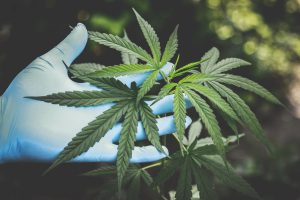
In 1996, California became the first state to legalize marijuana for medical use. Since then, 32 other states, as well as the nation’s capital, have followed suit, yet medical marijuana remains illegal at the federal level. Approved medical conditions for which marijuana may be prescribed or recommended include epilepsy, glaucoma, and chronic pain.
Opioids are also commonly prescribed to those experiencing chronic pain, but they are highly addictive and were attributed to 47,600 overdose deaths in 2017, according to the Centers for Disease Control and Prevention (CDC). With an estimated 130 Americans dying of opioid-related overdoses every day, opioid deaths have reached epidemic proportions, leading to a national emphasis on potential solutions to the crisis. Medical marijuana has been tapped as a possible fix, but there are conflicting studies on the topic.
The Results Are In
Studies conducted in 2014 and 2018, and cited by the National Institute on Drug Abuse, found that medical marijuana laws may be associated with lower opioid prescribing rates. Further, legal medical marijuana dispensaries have been linked to decreases in opioid prescribing, self-reports of opioid misuse, and treatment admissions for opioid addiction.
The results of past studies led to a shift in evidence-based laws and treatment methods to combat opioid addiction. In New Jersey, for example, the state’s medical marijuana program was altered as recently as January 2019, naming opioid dependence as a qualifying condition for medical cannabis use. In opioid addiction treatment settings, medical marijuana can now be used in tandem with other forms of medically assisted treatment (MAT), such as suboxone or methadone.
The New Jersey medical marijuana classification is a result of research that may no longer be accurate, however. A new peer-reviewed study has found that medical marijuana doesn’t correlate with fewer overdose deaths. The study, published in Proceedings of the National Academy of Sciences in June 2019, actually found that states with medical marijuana laws saw more opioid-related deaths, rather than fewer.
“We find it unlikely that medical cannabis — used by about 2.5 percent of the US population — has exerted large conflicting effects on opioid overdose mortality,” researchers concluded. Despite the disappointing results, however, the study advocates for continued research into the therapeutic potential of cannabis.
Classification and Effects of Medical Marijuana
Despite the growing number of U.S. states that consider marijuana to be a viable medicine, it is considered a Schedule I controlled substance at the federal level. Schedule I classification is reserved for drugs that are considered the most dangerous and that have no known medical applications. Drugs classified as Schedule I also have a “high potential for abuse,” according to the Controlled Substances Act of 1970.
Interestingly, heroin is a Schedule I drug, yet other types of opioids, such as OxyContin and morphine, are classified as Schedule II. Many advocates of marijuana believe that it is wrongly classified, as it does indeed have legitimate medical applications. Marijuana may not truly be “dangerous,” either: no one has ever died from a marijuana overdose. That’s not to say that marijuana can’t be misused, however.
Marijuana can alter one’s perceptions and reaction times, for instance, and it’s not safe to get behind the wheel while under the influence of marijuana. Even if a driver has a valid medical marijuana card, he or she may be at risk of a DUI charge when driving while impaired.
In the wake of widespread legalization of both recreational and medical cannabis, many states have adopted a series of roadside tests to determine if a driver is impaired by marijuana. Further, some states, including Illinois, consider a medical marijuana card to be an automatic authorization of field sobriety testing. Those with opioid prescriptions are not subject to the same stringent field sobriety test requirements as medical marijuana patients, but should also use caution when operating a vehicle.
Weighing Possible Solutions
While medical marijuana may not correlate with a reduction in opioid deaths, other possible solutions to the opioid epidemic exist. For example, the United States Department of Health and Human Services (HHS) has developed a comprehensive five-point strategy to reduce opioid death rates:
- Better addiction prevention, treatment, and recovery services
- Better data
- Better pain management (including medical marijuana)
- Better targeting of overdose-reversing drugs
- Better research
The general public and healthcare providers alike can do their part to address the crisis by learning more about opioids and seeking out alternative forms of pain management. Some individuals living with chronic pain have found that CBD can help reduce symptoms. CBD is a non-psychoactive component found in marijuana and hemp plants, and it’s used to treat anxiety and sleep disorders as well as neuropathic pain.
Addiction treatment may also be beneficial for those who have become dependent on opioids. Some medical professionals have found a whole-body treatment approach to be effective, reports Bradley University. Biological, psychological, and social health are intertwined, and a focus on rebuilding relationships and addressing disorders like depression can increase an opioid recovery program’s effectiveness.
Final Thoughts
Since marijuana is no longer considered a potential solution to the opioid crisis, Americans must remain vigilant regarding the dangers of opioids. For now, those addicted to opioids, either legally prescribed or illicit, remain at risk of overdose on a daily basis. Finding alternative solutions to chronic pain management, including medical marijuana, may be a key component in reducing the number of opioid-related deaths.




Be the first to comment